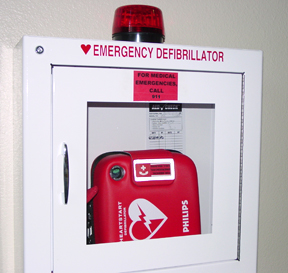
A common misperception about AEDs is that they are to be used only by emergency responders. In fact, the opposite is true. Paramedics arrive at emergency scenes with their own defibrillation equipment. So, if you know where an AED is located, empower yourself to use it if you are helping someone in cardiac arrest.
AEDs provide voice instructions and visual prompts to the bystander who is providing aid, including how to attach the pads to a victim’s bare chest. The device analyzes the person’s heart activity to determine when and if an electric shock should be delivered. Remember, use an AED in conjunction with chest compressions, not instead of them.
When you respond to a cardiac arrest where an AED is available, remember the 3 Cs:
- Check for responsiveness—“Shake and shout” and rub the sternum (breast bone) hard with your knuckles.
- Call 911 and retrieve the AED, or ask someone else to.
- Compress - Perform fast, forceful chest compressions until the AED is activated.
If the AED tells you to do so, press the button to deliver a shock. After the shock, continue chest compressions (at a rate of 100 a minute) for two more minutes. Continue doing 200 chest compressions followed by the AED assessment until, the patient is revived or medical assistance arrives.

